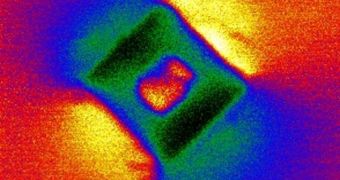Scientists at the University of California in Los Angeles (UCLA) have recently announced a major breakthrough in the field of nanotechnology, when they managed to get custom-built nanoparticles of precise shapes to self-assemble in a liquid crystal medium. Getting such structures to at least interact with each other has been something that proved to be very difficult to crack over the past few years, as evidenced by the fact that chemists have never before managed to accomplish this feat. A joint UCLA team, featuring both physicists and chemists, now managed to crack the problem, PhysOrg reports.
Details of the amazing results appear in the November 20 issue of the top journal Science. Funding for the innovation came from the US National Science Foundation (NSF). The materials that made the object of the investigation are known as “LithoParticles” and the scientists say that they have a massive number of technological and scientific uses. These components are made entirely out of solid polymeric materials, the team adds.
“We're learning the rules about how these lithographic particles self-assemble. This method may enable us to cause them to assemble in desired configurations. We're examining how pairs of particles interact and come to attach together. If we can get the particles to interact in certain controlled ways, we can build larger-scale assemblies that may have applications in photonics, optical communication networks and a variety of other areas,” explains UCLA professor of chemistry and physics Thomas G. Mason.
The expert is also a member of the university's California NanoSystems Institute. He collaborated with postdoctoral scholar Clayton Lapointe, also the lead author of the journal entry, and University of Colorado in Boulder (UCB) assistant professor of physics Ivan Smalyukh. The experts created nanoparticles of specific shapes, such as triangles, squares, and pentagons, then used an optical microscope to observe how these individual building blocks interacted and connected to each other in a liquid crystal environment.
“This is a very complex material that we have created. We have made lithographic particles dispersed in a liquid crystal, and the molecular constituents are aligned,” Mason adds. “In this environment, the particles have different kinds of interactions that depend on their shapes. We have shown in a systematic way how by changing the number of sides of the particles in a controlled way, we can characterize the differences in their interactions,” he adds. This essentially means that the researchers can control most aspects of how these particles interact at the nanoscale, to form larger structures.

 14 DAY TRIAL //
14 DAY TRIAL //